Report: Increased Chinese and Russian Military Cooperation Threatens U.S. Interests
China and Russia are growing closer militarily through a series of increasingly complex military exercises and sales of advanced arms that could create more security headaches for the U.S. and its allies, according to a new government report released Monday.
The report from the U.S.-China Economic and Security Review Commission outlines a pattern of cooperation between two of America’s security international rivals that could exacerbate tensions from Eastern Europe to the South China Sea – a pattern of cooperation in that has seen an uptick in the last several years.
While the report concludes that generations of mistrust between Moscow and Beijing will likely preclude an extensive mutual defense agreement – where one country would come to the aid of another if attacked by a third party – the results of the increased cooperation could be used to thwart U.S. and allies in policy disputes.
Exercises
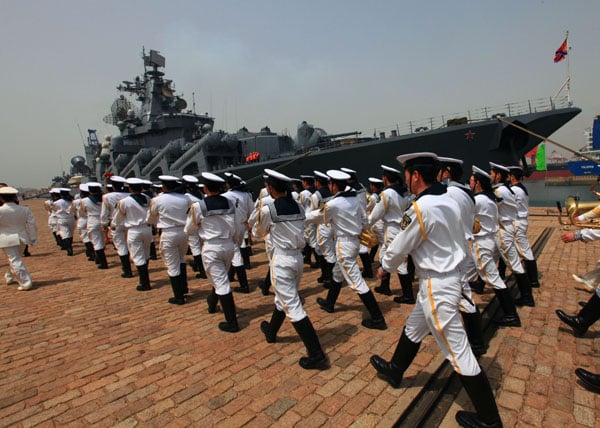
Chinese marines attend the farewell ceremony for Russian navy in Qingdao, east China’s Shandong Province, April 27, 2012. Xinhua Photo
Since 2003, the People’s Liberation Army and the Russian military have conducted 25 bilateral military exercises. Growing from a low-level exercise along the Russian frontier in Heilongjiang province with a handful of troops, those exercises have grown into massive joint warfare exercises involving more dozens ships and thousands of military personnel.
The exercises allow the more insulated PLA experience in working internationally, “operate in unfamiliar environments outside China; address linguistic, cultural, and other barriers to effective communication with Russian troops; practice battlefield tactics and combat methods; and apply lessons learned to joint operations,” read the report.
“Beijing and Moscow [also] use these exercises to signal their respective preferences, intentions, and capabilities to each other, in addition to international and domestic audiences.”
“Beijing and Moscow [also] use these exercises to signal their respective preferences, intentions, and capabilities to each other, in addition to international and domestic audiences.”
While the Russians and the PLA are quick to say their exercises aren’t aimed at any particular country the timing and location of the exercises send messages to potential rivals.
“For example, following the ruling of an arbitral tribunal at the Permanent Court of Arbitration in The Hague invalidating China’s territorial claims in the South China Sea, the two sides conducted their annual naval exercise, Joint Sea-2016, in the South China Sea with a focus on ‘island-seizing’,” read the report. Months before the exercise, Moscow expressed its support for Beijing’s position in the South China Sea, and weeks prior to the start of the exercise, President Putin said Russia did not recognize the tribunal’s decision.”
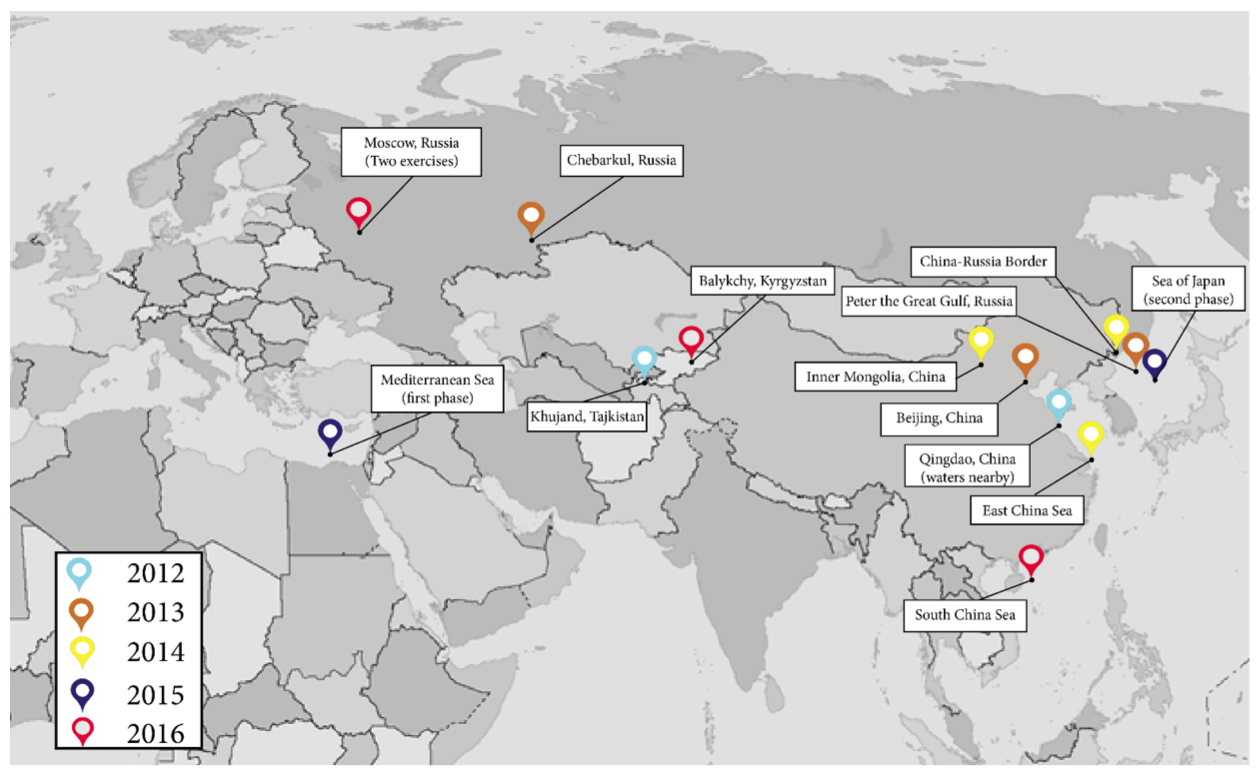
Approximate Location of China-Russia Military Exercises (2012–2016). U.S.-China Economic and Security Review Commission Graphic
The complexity of the exercises has increased since the Russian seizure of the Crimea region of Ukraine in 2014. Since then, Russia has become increasingly isolated through sanctions imposed by the West with Russia potentially providing a new security partner.
In the lead up to joint exercises between the Russian military and the PLA in the Pacific and in the Mediterranean, Russian leaders said part of their goal was to signal the world there could be an alternative option to a U.S. led international order.
“We believe that the main goal of pooling our effort is to shape a collective regional security system,” Russian Defense Minister Sergei Shoigu
said in late 2014.
“We also expressed concern over U.S. attempts to strengthen its military and political clout.”
said in late 2014.
“We also expressed concern over U.S. attempts to strengthen its military and political clout.”
Arms Sales
Before Russia and China began their recent spate of bilateral exercises, the key tie between Moscow and Beijing was arms sales and military technology cooperation – totaling about $26 billion from 1992 to 2006 according to estimates cited in the report.
Moscow sold Beijing, “export versions of the Su-27 and Su-30 fighter, the S-300 SAM defense system, Sovermennyy-class guided missile destroyer, and Kilo-class diesel electric submarine,” the report said, citing data from the Stockholm International Peace Research Institute.
Fears of China copying Russian systems led to a drop off in arms sales between the two countries – especially higher end weapon systems. Chinese arms manufactures are notorious for taking, modifying and reproducing weapon designs.
Fears of China copying Russian systems led to a drop off in arms sales between the two countries – especially higher end weapon systems. Chinese arms manufactures are notorious for taking, modifying and reproducing weapon designs.
However, “since the United States and Europe imposed and then tightened sanctions on Russia following its annexation of Crimea in 2014, however, Russia has relaxed its opposition to arms transfers of some of its most advanced systems to China and engaged in more extensive defense industry cooperation with China,” read the report.
Those include a December sale of Russian Sukhoi Su-35 Flanker-E air superiority fighters and the S-400 surface to air missile system (NATO reporting name: SA-21 Growler).
The S-400s, in particular, have been a concern for U.S. forces since their introduction a decade ago and could complicate the air warfare outlook over the Western Pacific.
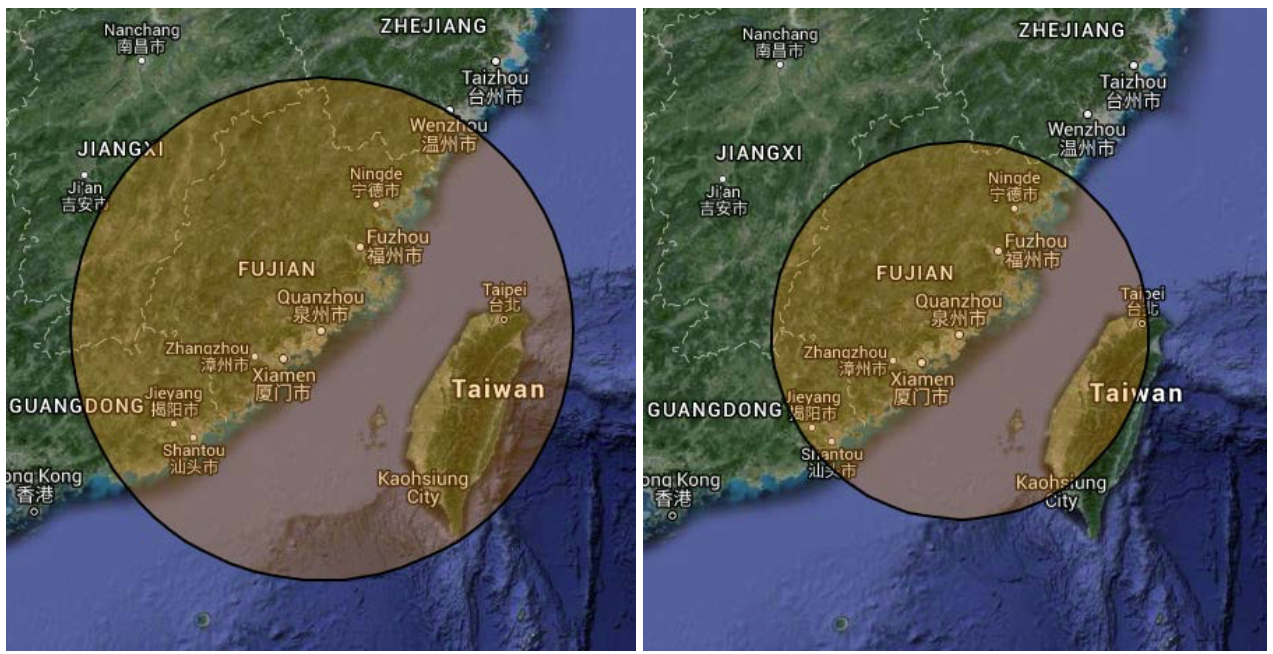
Range of S-400 (left) vs. S-300 (right) SAM Systems if Placed Directly across the Taiwan Strait. U.S.-China Economic and Security Review Commission Graphic
“Russia’s sale of four to six battalions of S-400 SAM systems to China, set for delivery no earlier than 2018, could impact the balance of military power across the Taiwan Strait and in waters close to China, with implications for U.S. security interests,” read the report.
“The S-400 will increase the range of China’s SAM force from the S-300’s 300 kilometers (approximately 186 miles) to 400 kilometers (approximately 249 miles)—enough to cover all of Taiwan, parts of the East China Sea, and parts of the South China Sea.”
“The S-400 will increase the range of China’s SAM force from the S-300’s 300 kilometers (approximately 186 miles) to 400 kilometers (approximately 249 miles)—enough to cover all of Taiwan, parts of the East China Sea, and parts of the South China Sea.”
Defense Pact Unlikely
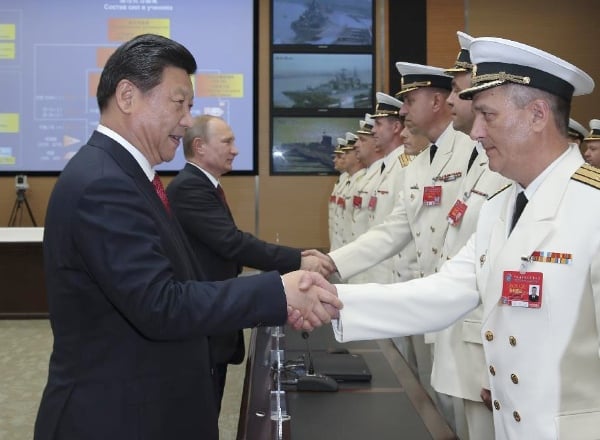
Chinese president Xi Jinping and Russian president Vladimir Putin greet participants of Joint Sea-2014 exercise at Wusong naval port in Shanghai, east China, May 20, 2014. Xinhua Photo
While cooperation between the Russia and China have expanded, there are still no signs the cooperation could evolve into a formalized security pact like the bilateral agreements between Washington and Taipei or Washington and Tokyo, concluded the report.
The report said ongoing economic competition and xenophobia would continue to prevent Moscow and China from developing similar alliances.
Russia has spent years developing ties with Chinese regional rivals Vietnam and India. Additionally, Russia has been unhappy with China’s copying of its military hardware.
“These actions include China reverse-engineering Russian Su-27 fighter jets and marketing indigenous copies of them in the global arms market in the mid-late 2000s, 12 and Russia’s October 2016 announcement that it would sell four to five S-400 SAM system battalions to India just a year and a half after it announced an S-400 sale to China, a development Beijing almost certainly views with consternation due to China’s geopolitical rivalry with India,” read the report.
Even with a less formal defense agreement, the report concluded that the continued high-end cooperation could hinder U.S. policy – particularly in the Western Pacific.
“As Beijing and Moscow increasingly share overlapping interests and maintain a shared resistance to U.S. leadership in the Asia-Pacific, the two countries appear likely to further deepen defense relations in the coming years,” read the report.
“In particular, Russian arms sales to China and military-technical cooperation could have significant consequences for the United States, challenging U.S. air superiority and posing problems for U.S., allied, and partner assets in the region.”
“In particular, Russian arms sales to China and military-technical cooperation could have significant consequences for the United States, challenging U.S. air superiority and posing problems for U.S., allied, and partner assets in the region.”
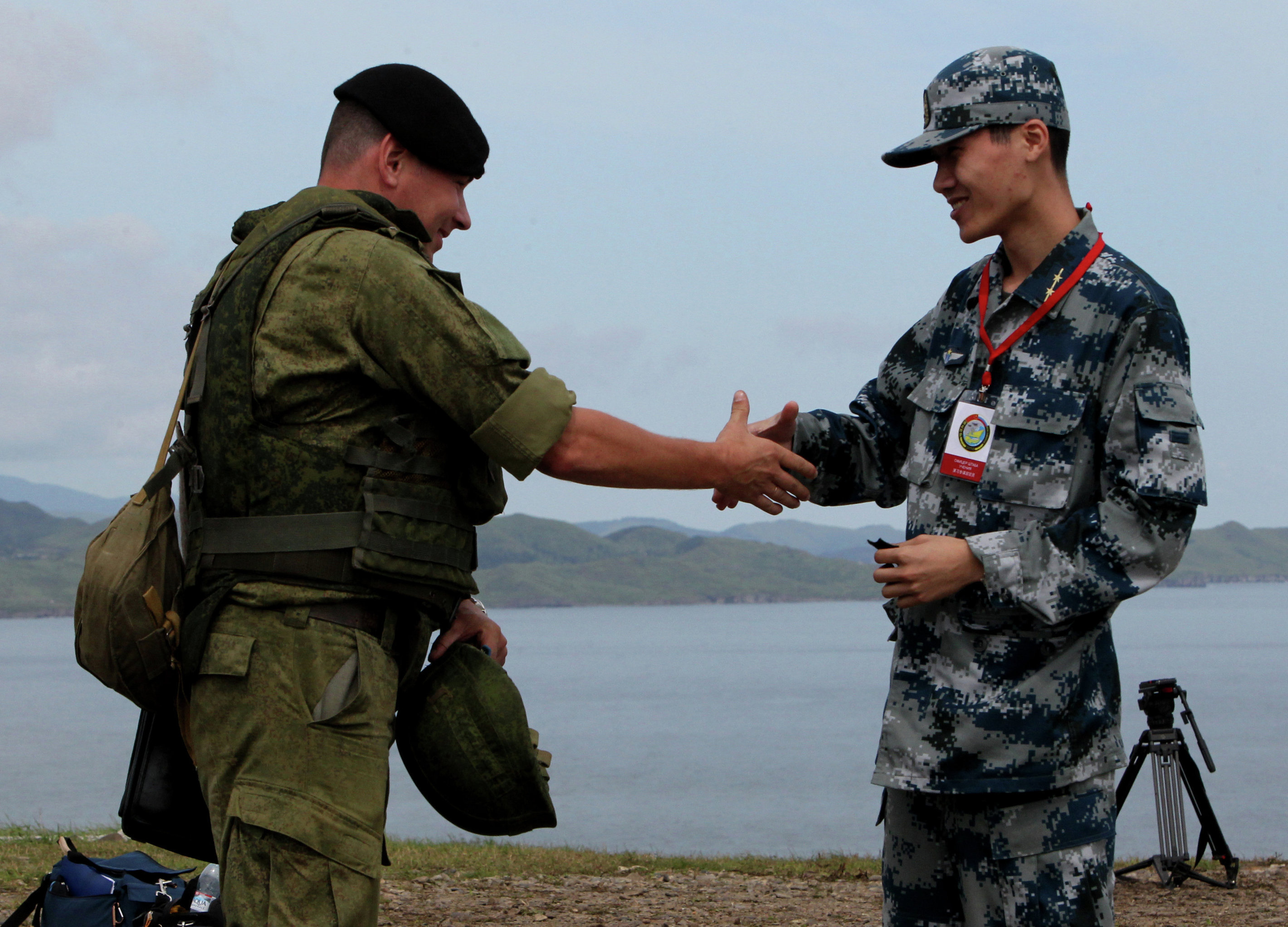
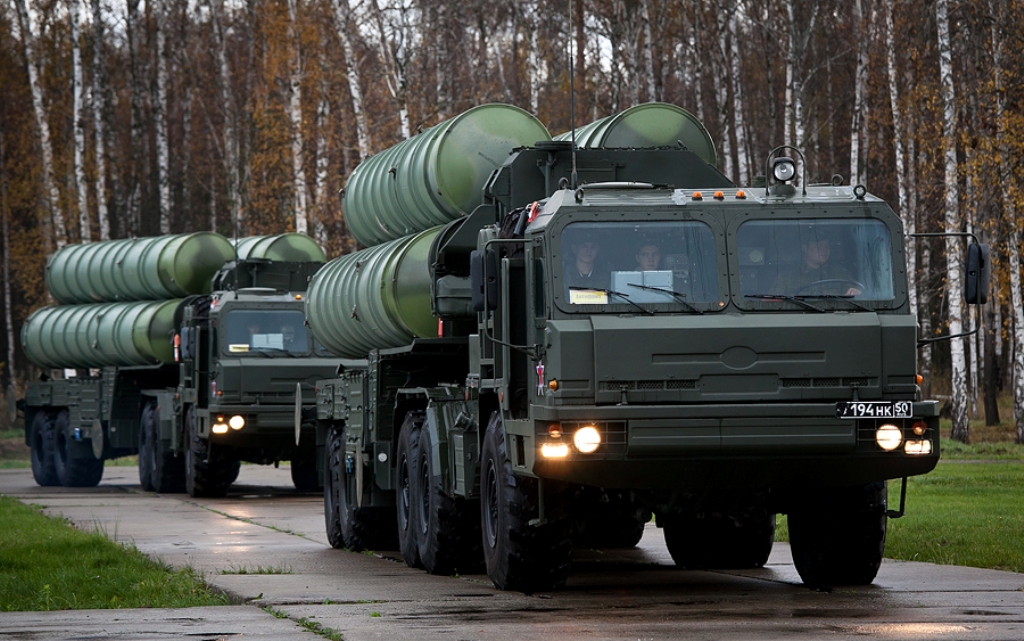
No comments:
Post a Comment
Comments always welcome!